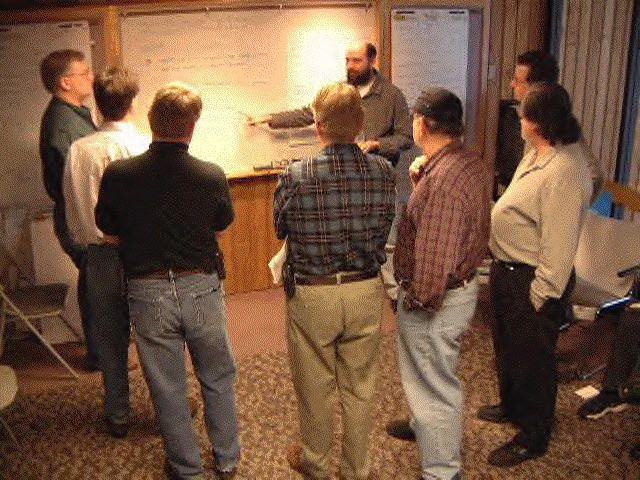
Share This Post
Learning to access more agility is the answer to several of the challenges that leaders confront in the face of everyday change, innovation, new technology and stress. You can try to work more agile, but if people do not increase their personal agility, it is difficult for the organisation to actually become agile.
You may be familiar with a leader – let’s call him Peter – who ended an otherwise successful project to minimise risks. This was simply because there were too many unknown factors which were too difficult to predict and too potentially challenging of an outcome to control. Perhaps, you have made a similar decision. In a stable environment, this is definitely the right thing to do. This is the type of environment where you can anticipate customer behaviour 18 months or more ahead, where you are not in danger of being disrupted, where you are not threatened by stress or new technology, and where success is created by doing the same thing as usual. Yet, in a constantly changing and unpredictable environment, being agile is needed and necessary.
Motivational speech: Agility is a mindset
These days, I am giving many motivational speeches on agility is a state of mind. It is a concept that many organisations are embracing. To be agile means to be able to move quickly and easily. It is actually a term that has been used in sports and dog training for a long time. But it only entered the business world and leadership at the beginning of this century with the agile manifesto. However, the concept of agile is nothing new. For decades, researchers (Weick (1976), Mintzberg (1985), Hamel (2012)) have discussed new and more flexible forms of organisation that enable the business to move quickly and easily when things are changing. Yet, what is new is that it requires you, as a leader, to be emotionally agile.
This article first appeared in connection with the leader’s conference series on agile leadership, where the author was also a featured speaker giving a motivational speech on agility:
Get more info about the keynote and on booking of me here:
What does agile mean?
Agile means to be able to move quickly and easily in its movements (Oxford Dictionary, 2018). The word has been used extensively in sports and dog training, but as a concept, ‘agility’ only entered the business world this millennium. It was first introduced in a business context as a project management method for innovation and IT development projects. Later, the concept of agility became about emotional agility in a leadership development context. Examples of agile leaders exist in many places and you probably recognise the traits. With an open mind, agile leaders can navigate uncertainty, act appropriately under pressure, take calculated risks in unknown territories, innovate and create steady momentum in rocky waters.
The Agile Manifesto
At the turn of the century, software markets began to change quickly and unpredictably. The problem was basically that product specifications were already outdated by the time the software reached the customer. In 2001, 17 rebellious software developers in Snowbird, Utah, met to find better ways to lead software development. They had felt oppressed from bureaucratic procedures that were hampering their ability to meet customers’ ever-changing needs. The result of the meeting became the agile manifesto.

1. People rather than processes
Projects should be built around motivated people who can get the support they need. It should also be from the people you trust to get the job done. Management’s role should be to remove obstacles to facilitate easier and more fruitful collaboration
2. Talk less, experiment more
Teams should experiment with those small aspects of production which are in close cooperation with a few selected customers for short periods. If customers like what you have developed, keep it. If the customers are unsatisfied, make the necessary corrections or move on to the next product. Instead of spending time in lengthy discussions, team members should resolve strategic disagreements through experimentation.
3. Response to planning
Detailed, conventional project management is a waste of time and money. You should only plan for the tasks that will not have already changed once you reach them. It will create less distance to your customers and develop better results.
4. Centering around the customer, not the contracts
Specifications need to be developed throughout the project because customers can rarely predict what they really want. Therefore, one should not be restricted to contracts. Minimal prototypes, frequent market surveys and ongoing collaboration lend to focusing on what customers will ultimately appreciate. Here the leader’s role is to set the direction, very often in the form of a vision. It’s important not to micro manage. Employees should be able to act quickly and independently when needed and go to their manager to get support when they want it. This leadership style requires openness and trust.
Agile organisations
The conduct of the leaders is significant. It is indeed tempting to place all of the responsibility of the leader as well. But it is actually the interaction between management and the organisation that create the results. The organisation’s reward system, culture, structures, goals and role models draw the framework that employees and managers can succeed or fail within. It can, therefore, be beneficial to work at all levels, both organisational, managerial and at the individual level. Agile management does not have a final destination. You can always become more agile. An agile organisation is one that can easily and quickly respond to challenges and changes. It can be designed, developed, cultivated and trained.
Agile organisational development
Most of the organisations that have turned to agility have worked with agility at a project level. It might have been used to run some innovation sprints or utilised for some agile project management methods. Netflix is an example where the entire organisation trains to be agile (Hochstein, 2017). At Netflix, errors are invited within a controlled environment. It keeps employees on their toes. This is similar to how you might practice your emergency preparedness drills in the office in case of fire.
Netflix’s chaos-monkey
When you want to relax and watch a movie or series, there is nothing more annoying than if the service doesn’t work. Netflix knows this well. Their movie and TV service is basically a digital platform with a lot of heavy content, where uptime and user experience are crucial to their competitiveness. Therefore, Netflix has developed a programme called the ‘Chaos Monkey’. The Chaos Monkey works like a virus. At unforeseen times during working hours, employees will encounter errors and knots in the code that the Chaos Monkey has intentionally created and which they will then have to solve. You could call it a digital fire drill (Netflix Technology Blog, 2011). Netflix is a successful and agile company worth watching. Their annual revenue increased by 32% from 2016-2017, while the financial result tripled to $ 559 million. They have an agile management philosophy and an HR policy that has garnered much attention, which has also been an important factor in their financial success.
Individual agility
Although the organisations where we work create the frameworks for us to succeed or fail, and even though they frame very much for how you can succeed, you can also do something yourself. The higher in the system you sit, the more critical your agility is to the rest of the organisation. Agile executives can create great results in a short period of time. This not only applies to financial results, but also to creating long-term value for organisations, societies and people. This even applies to everyday life between people and things that change continuously.
The next blog post will deep dive more into this individual level of agility. It will be posted in two weeks.
Read more about my inspirational speech on agility here. If you are interested in the lecture you can contact me by phone: +45 26 361 199 or, by e-mail: hello@josefinecampbell.com. We work with energy and passion with the vision to help people not just to perform. This, by unlocking the power of personal energy in all organizations to create long-term value in a sustainable way. If you would like to be updated with new articles and videos, sign up for our mailing list. Your mail is not shared with anyone and there are advantages to being on the list e.g., getting a mini course in your personal leadership.
Would you like the newest knowledge and inspiration sent directly to you?
Then subscribe to our monthly newsletter
References
David, S. (2016): Emotional Agility: Get Unstuck, Embrace Change, and Thrive in Work and Life. New York: Penguin Random House LLC.
Den danske ordbog. (2018) The Danish Dictionary. Available from: https://ordnet.dk/ddo/forside.
Dweck, C.S. (2006) Mindset – The New Psychology of Success. New York: Random House Publishing Group.
Hamel, G. (2012). What Matters Now: How to Win in a World of Relentless Change, Ferocious Competition, and Unstoppable Innovation. UK: Jossey-Bass.
Hochstein, L. (2017) Chaos Monkey. Available from: https://github.com/Netflix/SimianArmy/wiki/Chaos-Monkey.
Mintzberg, H. & Waters, J.A. (1985) Of Strategies, Deliberate and Emergent. Strategic Management Journal. 6(3), 257-272. Available from: http://citeseerx.ist.psu.edu/viewdoc/download?doi=10.1.1.658.2255&rep=rep1&type=pdf.
Netflix Technology Blog. (2011) The Netflix Simian Army. Available from: https://medium.com/netflix-techblog/the-netflix-simian-army-16e57fbab116.
Rigby, D.K, Sutherland, J., & Takeuchi, H. (2016) Embracing Agile. Harvard Business Review. https://hbr.org/2016/05/embracing-agile.
Weick, K. (1976) Educational Organizations as Loosely Coupled Systems. Administrative Science Quarterly. 21(1), 1-19. Available from: doi:10.2307/2391875.












